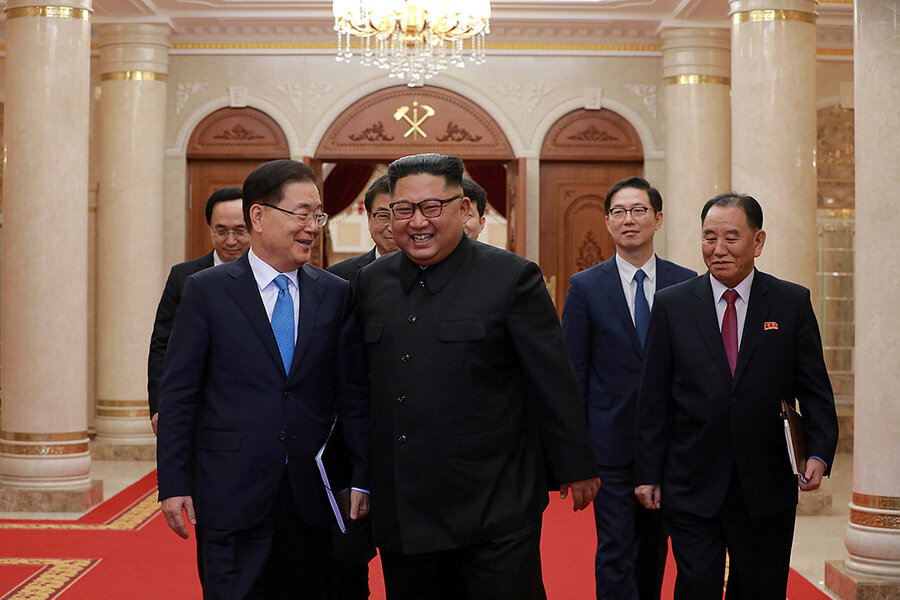Ending North Korea’s nuclear program: What now?
Loading...
Domestic politics now looms large over a White House foreign-policy endeavor that stands a chance of becoming a big step forward for world peace and stability.
Negotiations between the United States and North Korea aimed at the denuclearization of the reclusive and repressive Asian nation have dragged on without much to show for them since a historic June 12 meeting in Singapore between President Trump and North Korean leader Kim Jong-un. In a sweeping statement immediately after that summit Mr. Trump tweeted: “There is no longer a nuclear threat from North Korea.”
Nearly everyone, perhaps even Trump himself, knows he was overstating what had happened. But seen as stating an aspiration, not a fact, it clearly put forward the result the US was seeking.
The summit has yielded a tangible result: Unquestionably US-North Korean tensions, and the threat of a nuclear missile launch, have been lower over the summer.
But patience on both sides seems to be wearing thin. Any substantial progress toward denuclearization seems stalled. The president recently asked Secretary of State Mike Pompeo not to make a planned visit to North Korea, citing the lack of forward momentum in talks.
Whatever personal rapport Trump has built with Mr. Kim seems intact. This week, through a South Korean diplomat, Kim said that his faith in Trump was “unchanged,” and he set the first real deadline for negotiations to be completed: before the end of Trump’s first term of office in early 2021. Trump tweeted in response: “Thank you to Chairman Kim. We will get it done together!”
But this week also saw two damaging domestic events for the Trump administration: the publication of a new book (“Fear: Trump in the White House”) about the apparently troubled inner workings of the White House by investigative reporter Bob Woodward, and an unflattering assessment of Trump’s performance in office by an unidentified senior official, published as an opinion piece in The New York Times.
Will Kim now see Trump as a weakened and unreliable partner, perhaps not reelectable in 2020, or possibly forced to leave even earlier? Or has Kim’s new deadline recognized that he has a willing counterpart in Washington now and should make a deal before another president arrives who may take a different approach?
Both Trump and Kim have shown a willingness to play a cat-and-mouse game, alternating friendly personal overtures with tough talk, often through surrogates. But both leaders (and both countries) would seem to have much to gain from better relations.
Trump has halted joint US-South Korean military exercises as a goodwill gesture. Kim has stopped his nuclear tests and provocative missile firings.
Some kind of formal agreement that would officially end the Korean War (only a cease-fire has existed for more than 60 years) could be a further US concession. But would the North then argue that US troops have no reason to be stationed on South Korean soil?
A meeting Sept. 18-20 between Kim and South Korean President Moon Jae-in, their third since April, will serve as another opportunity for dialogue with the North. The South is both a close US ally and has its own large stake in the outcome, making it an essential partner in any agreement.
It may take more than words to move negotiations forward. Reinstating sanctions that limit North Korea’s oil imports, for example, could create new urgency on Kim’s part to cut a real deal to end its nuclear weapons program in exchange for more normal relations with the US and the world.
Negotiation is always preferable to conflict. Patient, persistent talk can yield real results. But sometimes firm actions can prod vital negotiations along.





